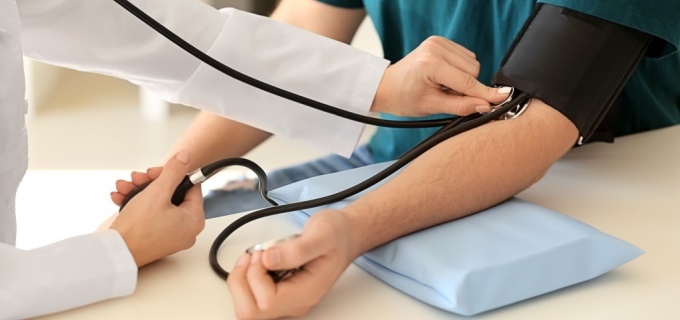Search for a doctor or hospital in your network.


Search for a doctor or hospital in your network.

Get News & Updates Directly To Your Inbox
Over time if left untreated, it can cause several serious health problems:
What makes high blood pressure especially dangerous is that most often, there aren’t any obvious warning signs that you have it. Almost half of adults in the United States have the condition and many do not know it.
Fortunately, by being proactive, you can get your blood pressure checked and take steps to help keep it at a healthy level.
Learn your Numbers
A routine health exam will let you know if your blood pressure is too high.
Your doctor will measure both your systolic blood pressure (pressure on the artery walls when the heart beats) and your diastolic pressure (pressure on the artery walls when the heart relaxes between beats). The American Heart Association (AHA) guidelines for healthy blood pressure is less than 120 systolic and 80 diastolic (120/80).
A person may be at risk for serious problems if their blood pressure reading is higher than 140/90. The good news is that there are a number of medicines and lifestyle changes a doctor can suggest to treat the issue.
There are a number of things that can raise your risk of high blood pressure, such as:
If you don’t have high blood pressure, there are a few simple steps you can take to help make sure you never will. These same steps can also help people who have been diagnosed with high blood pressure lower theirs.
Take steps now to keep your blood under control. Be sure to get an annual health exam. While there, talk with your doctor about your risk for high blood pressure and heart disease.
Blue Cross and Blue Shield of Illinois, a Division of Health Care Service Corporation,
a Mutual Legal Reserve Company, an Independent Licensee of the Blue Cross and Blue Shield Association
© Copyright 2025 Health Care Service Corporation. All Rights Reserved.
Verint is an operating division of Verint Americas, Inc., an independent company that provides and hosts an online community platform for blogging and access to social media for Blue Cross and Blue Shield of Illinois.
![]() File is in portable document format (PDF). To view this file, you may need to install a PDF reader program. Most PDF readers are a free download. One option is Adobe® Reader® which has a built-in screen reader. Other Adobe accessibility tools and information can be downloaded at https://www.adobe.com/trust/accessibility.html.
File is in portable document format (PDF). To view this file, you may need to install a PDF reader program. Most PDF readers are a free download. One option is Adobe® Reader® which has a built-in screen reader. Other Adobe accessibility tools and information can be downloaded at https://www.adobe.com/trust/accessibility.html. ![]()
![]() You are leaving this website/app ("site"). This new site may be offered by a vendor or an independent third party. The site may also contain non-Medicare related information. Some sites may require you to agree to their terms of use and privacy policy.
You are leaving this website/app ("site"). This new site may be offered by a vendor or an independent third party. The site may also contain non-Medicare related information. Some sites may require you to agree to their terms of use and privacy policy.
Powered by Verint